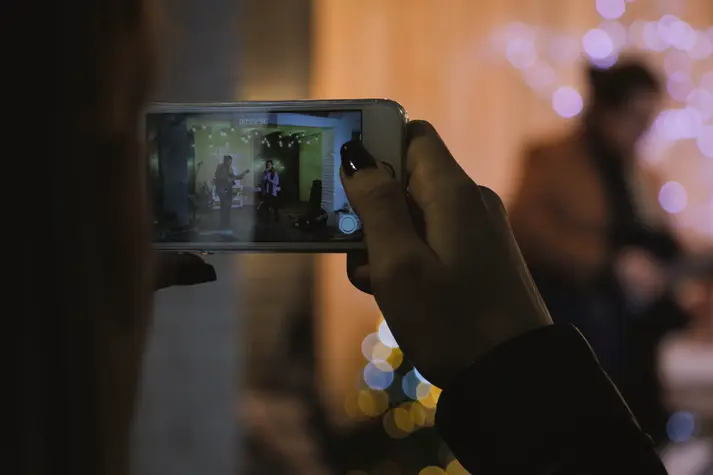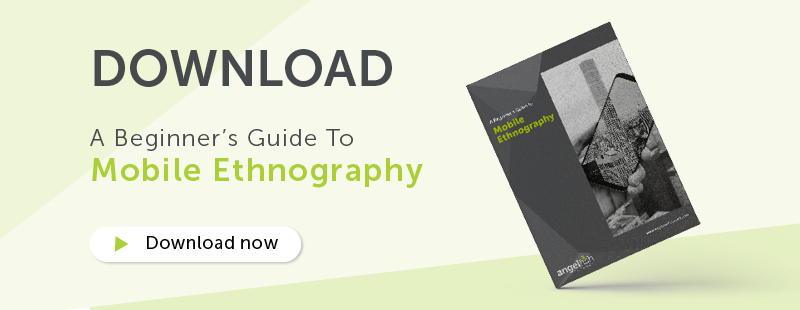
Smartphone Ethnography: 4 Lessons to Improve Digital Diary Research
Smartphone ethnography — also known as mobile ethnography — is transforming qualitative market research. By turning participants into researchers, it allows them to document their experiences in real time, whether at home, in-store, or on the move.
From video diaries to shopalongs and UX testing to photo libraries, smartphone ethnography offers a window into participants’ lives like never before. But it’s not without its challenges.
Here are four essential lessons to help your next smartphone ethnography project run smoothly and deliver rich, actionable insights.
What Is Smartphone Ethnography?
Smartphone ethnography is a form of digital qualitative research where participants use their mobile devices to record their thoughts, behaviours, and experiences in real time. It’s widely used in:
- FMCG market research
- UX and product testing
- Brand immersion studies
- Customer journey mapping
By removing the need for a researcher to be physically present, smartphone ethnography captures authentic, in-the-moment insights without external influence.
Learn more: What is Digital Ethnography?
-4.png?width=1200&height=628&name=Untitled%20design%20(4)-4.png)
Lesson 1: Plan, Plan — and Plan Some More
In order to make sure your smartphone ethnography goes as smoothly as possible, it’s important to thoroughly plan everything in advance. You can’t just send your participants off into a shop with their smartphone or expect them to explain their innermost feelings via a video diary without having a thorough plan in place first. In order for your research to go as smoothly as possible, you need to plan smart. From carefully selecting tasks that will get the results you need to providing good, clear instructions in the form of an information sheet so your participants aren’t left wondering what on earth they are supposed to do and when, a thorough plan will help to prevent any nasty surprises further down the line.
Lesson 2: Always Validate Your Participants
You should thoroughly validate participants before any market research project to make sure you only take the right people forward. However, it’s even more important in smartphone ethnography because you need to make completely sure your respondents clearly understand what they are supposed to be doing. By screening your participants and validating them over the phone, you can get a feel for whether or not they are the right fit for your project and ensure that they know their role, and it also gives you a chance to make sure they are technically able to get involved and are motivated enough to take part, as well as making sure they have a smartphone with as camera or video that will allow them to get involved and complete all the necessary tasks.
Lesson 3: Keep in Touch Throughout
The biggest difficulty with mobile research is making sure participants stay engaged throughout. Without a moderator physically present, it can be easy for them to get bored and lose focus, which is why it’s so important to regularly communicate with your participants and frequently follow up on what they are doing. Make sure you give them lots of feedback and praise them when things are going well, but at the same time also make sure you keep an eye out for those respondents who are struggling to complete tasks or who seem to be going off the boil so you can gently nudge them in the right direction too. Taking the time to keep in contact and even touch base with a quick phone call can really help boost engagement and make sure your respondents are happy with how things are going. And happy respondents mean better results so it's definitely worth your time!
Find out more about how to keep your respondents engaged by reading our blog.
Lesson 4: Choose the Right Incentive
You’ve taken your time to choose the very best participants for your research, made sure that you've planned everything and are going to keeping in regular contact with them to ensure they remain engaged and focused. But you should also spend some time considering what incentive you are going to offer them too. The right incentive can give participants that extra reason to take part to the best of their ability and boost engagement — something that’s really important in mobile ethnography where your participants are essentially left to their own devices. Think carefully about what they would be interested in: perhaps it’s something involving the topic of your research, or a voucher to a popular store, or even a relevant charitable donation, the right incentive can have a really positive impact on the success of your project, so make sure you choose wisely!
Final Thoughts
Smartphone ethnography is a powerful tool for capturing real-life insights — but only if it’s executed well. By planning thoroughly, validating participants, staying in touch, and offering the right incentives, you can unlock the full potential of this method.
Interested in using mobile ethnography for your next market research project? Then check out our beginners guide here.





-Oct-16-2025-09-09-03-1776-AM.png?width=500&name=Untitled%20design%20(3)-Oct-16-2025-09-09-03-1776-AM.png)







